Musings

Three high rollers, no?
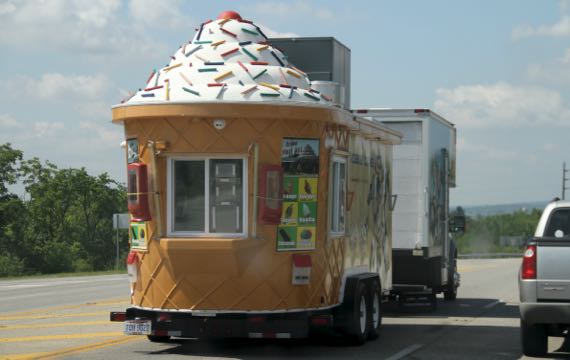
Ice-cream-cone trailer, with sprinkles.
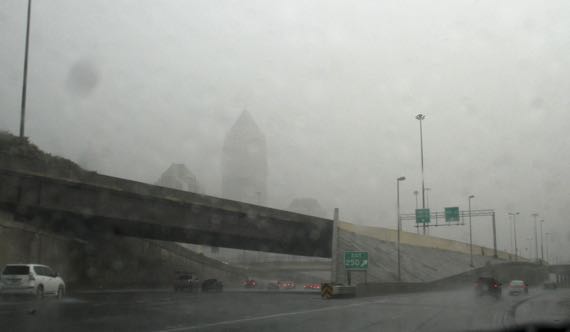
And, as we finally deviated from the Interstate, we drove into a gullywasher, with knee-deep water gushing across the city streets in some places. Didn’t last long, though—whew!
Posted at 9:42 PM |
Comments Off on Highway views
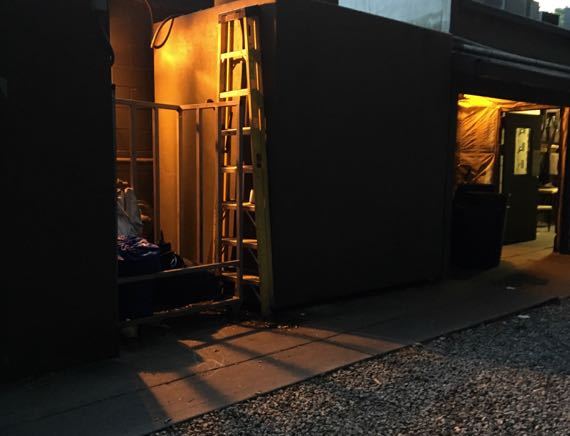
Eye-catching golden glow from security lights….
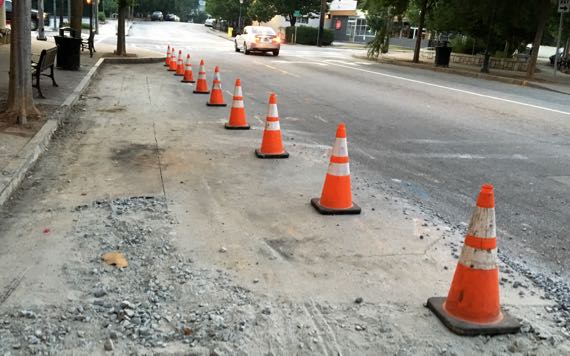
Height-challenged orange-cone soldier lineup….
These photos were taken about two minutes apart, although they don’t look that way…in the dark vs in the open street.
Posted at 6:11 PM |
Comments Off on Situational ambience
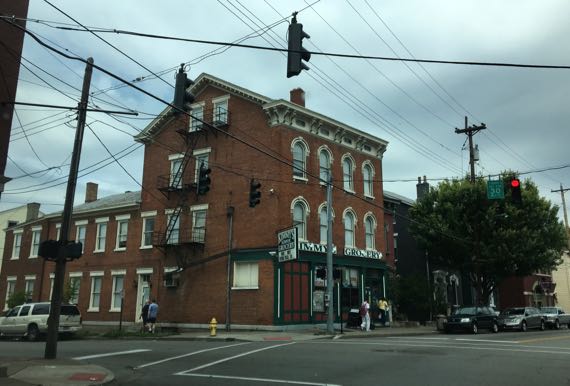
You know if this was your neighborhood, you’d sure shop sometimes at Kimmy’s Korner Groc.
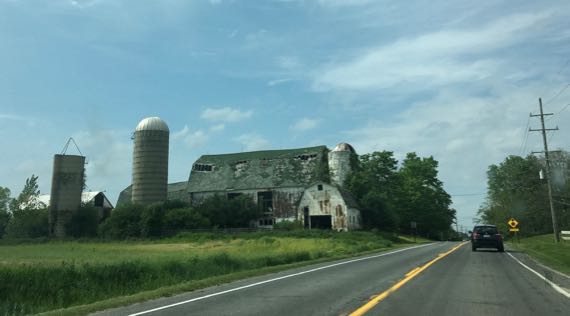
Silo sentinels of the Midwest often flank barns, but not all are dilapidated and deteriorating, like this specimen.
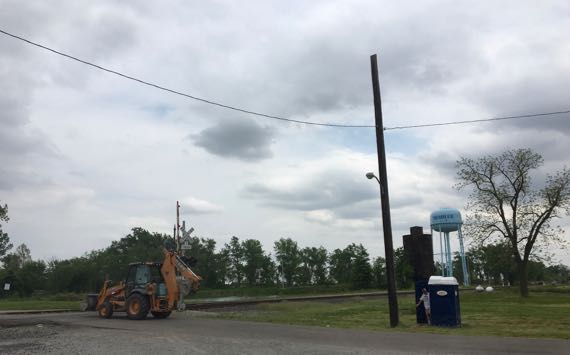
What is not in this photo is a modest-sized drone far above…a backhoe and a drone witnessing latrine use…glad I was on the sidelines.
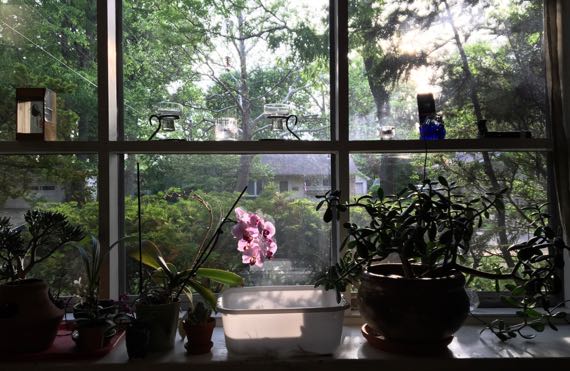
Orchid in window-still-life. Very welcoming. (Thnx.)
Posted at 10:45 PM |
Comments Off on Midwest glimpses
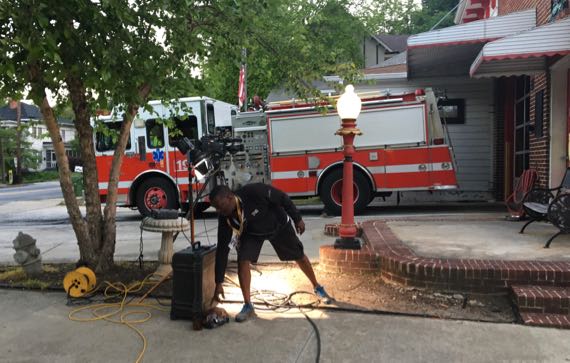
As I looped by the firehouse early this morning, I saw this news crew (well, two men) setting up for (I assume) a live-shot. The other guy was moving the “Vote Here ➔” sign to a…better location for the camera angle. I didn’t know this is a voting location….

Later, when walked to our polling place, I found this planter-chair. Viny. Or ivy-y.
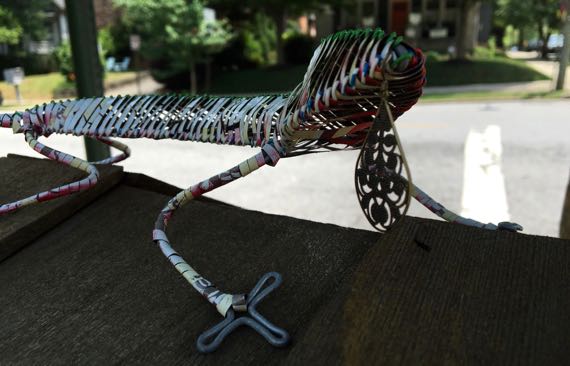
More art just up the block: a wire-frame lizard, with an errant earring in its mouth. On the roof of a non-bird house.
Posted at 7:17 PM |
Comments Off on Voting adventures
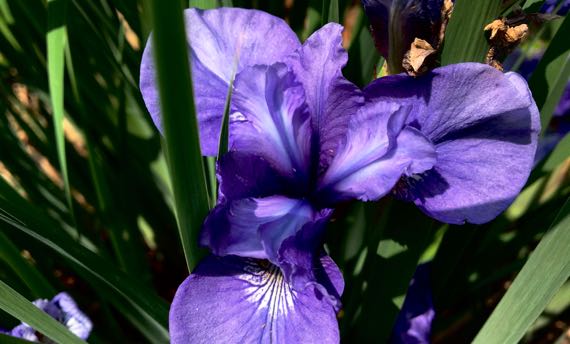
Ooops, not. Maybe it’s just an iris, and it IS Mother’s Day.
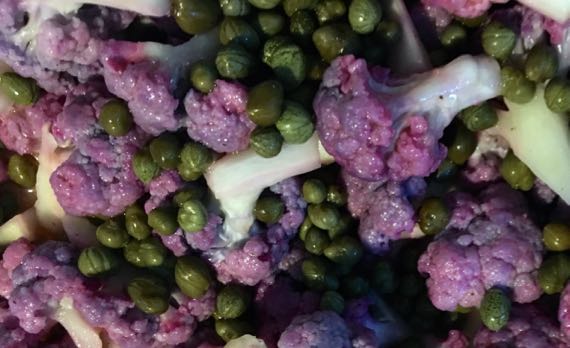
So, I was doing some simple cooking. And the cauliflower was purple. White at the base and purple at the…flower part. Nice contrast with the capers, no?

And, speaking of colorful, Thai curry à la Sammy and (Trader) Joe. With no fresh basil. And because of the recall, these are Danish peas. Of all things—Danish. Not merely organic….
Posted at 10:54 PM |
1 Comment »

I’ve (mostly) surmounted the jet lag. I include mostly because every once in a while I notice a bit of sluggishness creeping around my margins. (This café is near Les Halles in Paris.)
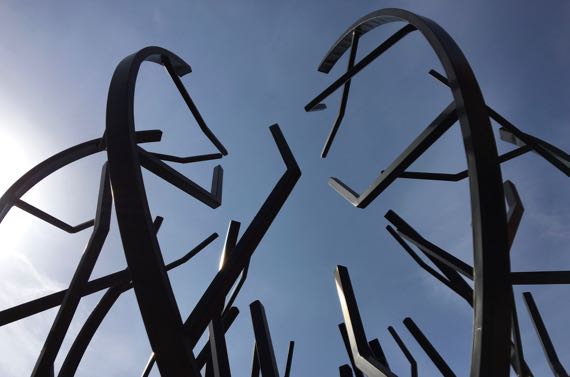
And here’s a pure art shot…from the plaza in front of the British Library.
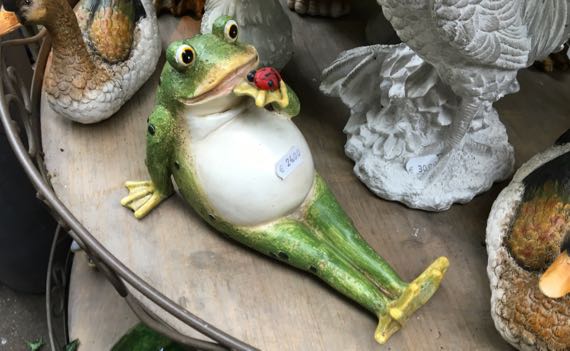
How often do you find a frog-holding-a-ladybug ceramic? And with a decorative €-euro price tag on the belly-bulge? Ah, Paris…. (But, €24? Wowzah. That’s pricey frog-bug art.)
Posted at 3:22 PM |
Comments Off on Memories, varied
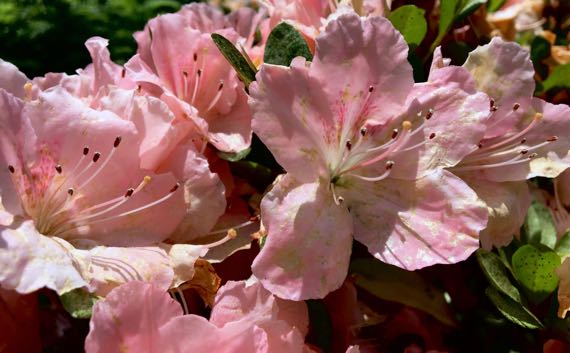
We’re finishing up the run of pale pink azaleas out front.
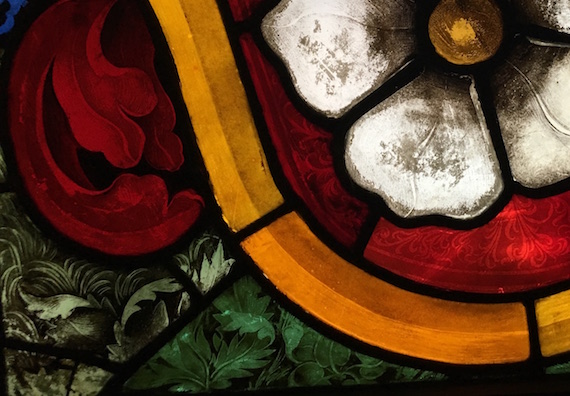
And…another “residual”…of a detail shot…from the Cluny, of a 1467 Mullenheim family arms stained glass piece. Love the shading, 3-D effects, color choices, whole ball of…not-wax.
Posted at 10:22 PM |
Comments Off on There goes April
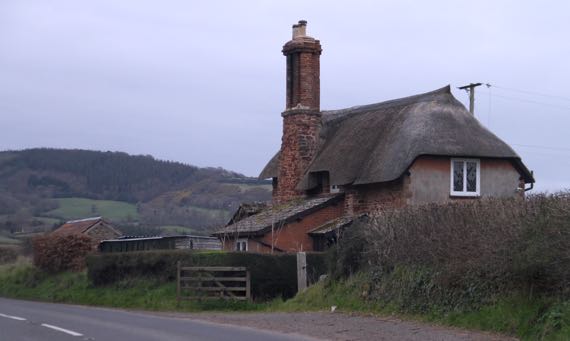
One image I didn’t give you from our England visit is of a thatched-roofed building. This one is neither a remarkable structure nor unusual thatch. Seems like many of the still-thatched buildings are right next to the road, suggesting they are old country routes…. Quite a chimney on this one, no? Note, too, the use of dense hedges as visual barriers….
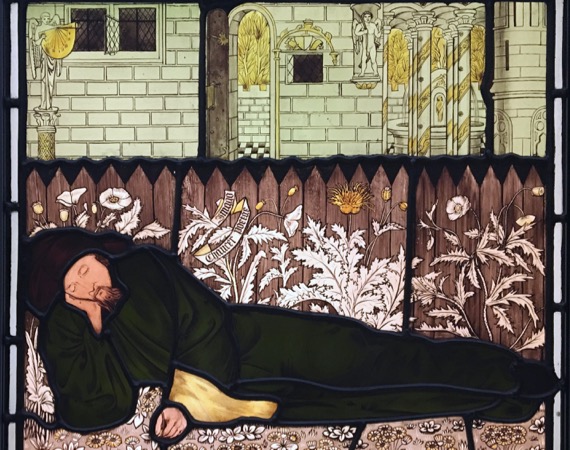
This is not church-glass, but ca. 1864 by a Neo-Gothic arts-and-crafts artist, a small piece we saw at the Musée National du Moyen Âge, titled “Chaucer asleep.” The designer was Sir Edward Coley Burne-Jones, and it was made by William Morris‘s decorative arts guild, which had six partners including Burne-Jones (photo of both men in 1874 here). They founded the group in 1861, and this piece was made just before their firm garnered a lot of business. In the 1850s, Burne-Jones was enamored of Canterbury Tales, so his choice of Chaucer before his design was in service of clients makes sense.
What I especially liked is all the plant-detail—in the meadow with the sleeping figure, against the fence, and glimpsed through openings in the wall. I like the angel holding the solar timepiece, left, and the poppies(?) by the fence. Interesting that the cloak is green, but not the plants…. I also like that his foot pokes gently out of what is otherwise the boundary of the rectangular piece, and into the framing area. BTW, the words are “Imago Chaucer Poetae.”
Posted at 10:22 PM |
1 Comment »

We were slow this morning, jet-lag slow. On the other hand, we did pretty well after we got going. We returned to downtown, parking above the Boston Tea Party mentioned yesterday, and went straight to the Salisbury Museum. The ambitious crew there has been updating the displays and presentation of the institution, and they are doing a fantastic job. We met two fellows from here last year, and so the SM was tops on our list for this trip. Unfortunately, our friend is away on leave, but he kindly left our names at Reception, so we breezed in. People can be so nice! I loved their new-as-of-2014 Wessex Gallery (of archaeology), and the Guru admired their handling of type and general museum-ing.
This photo is of some fine-quality beakers. Beakers are a vessel form with relatively straight/vertical sides, and often a slightly everted rim. (I think.) The earliest beaker-users in this area also kept domesticated animals, including cattle. This meant they had to do the whole pasture thing, and keep the cattle safe from human and animal marauders, a significant undertaking for the few individuals an extended family or residents of a hamlet. They also grew crops, and used wild foods.
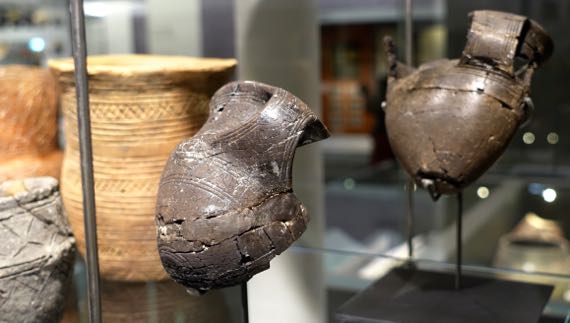
There is another class of artifacts dating back to ancient times, also Bronze Age like the beakers, which I have seen called “precious cups.” They are precious because they are made of very special (meaning unusual/rare) materials, including amber, gold, silver, and these of shale. There are very few precious cups known, and the shape may relate to a general tendency towards what some have characterized as a “drinking culture.”
I didn’t know shale could be worked like this. Note the decorative details inscribed into the surface and handle. Such craftsmanship!
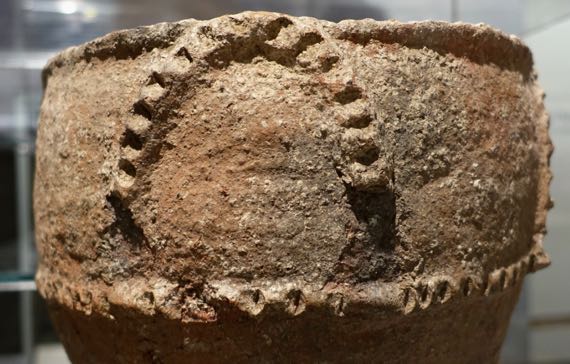
Here’s a detail of a very large vessel, a burial urn (held cremated human remains) with a bi-conical shape. The widest part is the ridge near the bottom of this shot. The size of this ceramic vessel meant its maker(s) knew how to handle clay and firing.
The above all date to the Bronze Age, which obviously was a time of people who used bronze, but they were also adept at crafting, building, wood-working, and making stone tools. Let’s jump forward in time….
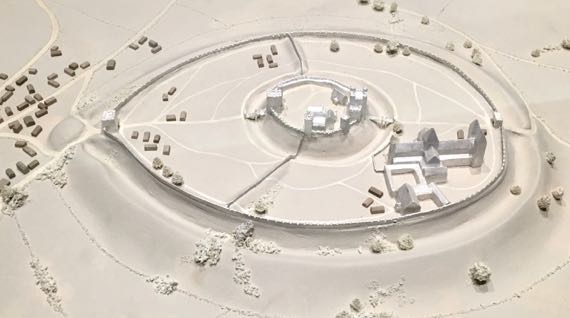
There’s a huge and distinctive flat-topped conical landform a few miles north of Salisbury. It had an Iron Age fort atop it, which was supplanted by Romans both atop and around the foot, living in a community they called Sorviodunum…. They had several roads that met near this human-modified landform, so it was an important place. Later peoples added the tippy-top area, making what became in William the Conqueror’s time the king’s castle. This model shows the tower/keep that was the most fortified place within this already fortified place was to the right in the upper, central area. The main entrance was from the left. Residents of the lower tier even built a cathedral-sized cathedral (consecrated in 1092), that huge building what was a typical church/abbey complex in the lower right quarter of this view. It is difficult to gauge the scale of this fortification with just the eye; however, it wasn’t big enough (or something), and movers and shakers set about re-locating the community so that their new cathedral was consecrated in 1220, and the old cathedral dissolved in 1226. Sometimes I mention the abandonment of former important macro-regional centers of political economy—the story of Old Sarum fits neatly into this topic.
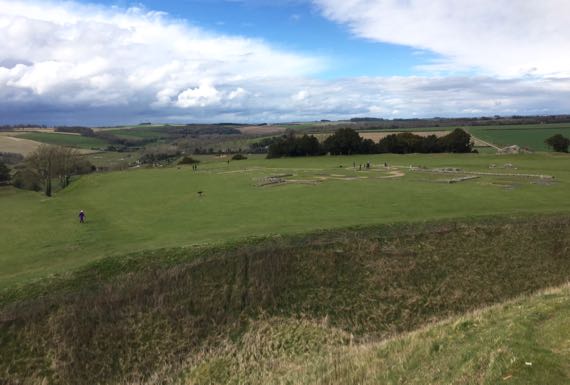
Here’s the view from the King’s Castle keep, looking across the flattened remains of the cathedral. Most of the building stone was left at Old Sarum into the 1500s, when official permission was given to take it. Only some foundation stones remain in the upper castle, with upper approximations of the walls made of mortared flint cobbles that had been in the wall-fill, and too small to be of interest to the long-ago stone-takers. The cathedral and buildings of the lower terrace were easier to get to, and they are mostly gone. The outline is only partly existing foundation stubs; the rest have been added in modern times. This area is happily used by dogs and dog-owners; we saw dozens playing and running/walking (dogs/people) as we overlooked the terrace from the remains of the king’s apartments.

Here’s the modern wooden footbridge that crosses the ditch (and what a ditch!) from the east, providing access to the inner, upper castle area. Note how the weather is changing…the bright sky of the previous shot shows grey clouds accumulating. We got back to the car just as the raindrops arrived. The rain didn’t last long, and we had plenty of sun until darkness set in about 8pm. (And there’s now a crescent moon.)
Info on beakers and beaker-making people from the Ashmolean. Details on similar from a Somerset source—Somerset is the next county to the WNW.
Posted at 3:30 PM |
Comments Off on Ancient and merely old (Wiltshire version)
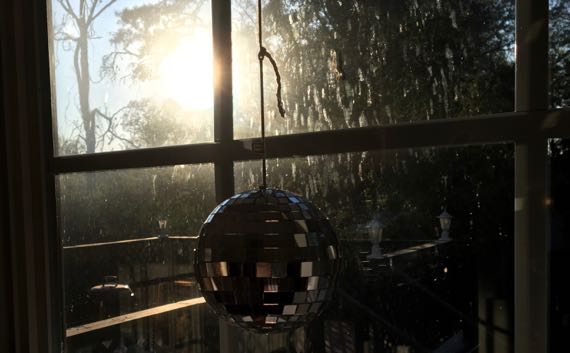
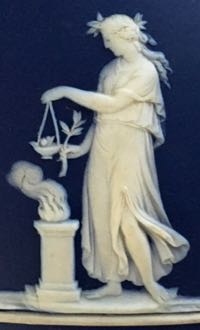
We day-tripped out of town today. In part we revisited memory places; we also visited new places, and old places that have been remade. Somehow, the mirror ball seemed to me to reflect the present and hold promise for memories and hints of the future. Probably just me….
The lady is on a Wedgwood vase, about seven inches tall and probably dating to about 1900. The figure is given different poses in different shaped pieces (e.g., tea pot; straight-sided vase), often facing out toward the viewer, or spaced farther from the fire(?), and with different hair. If I knew Classical mythology better, I would know exactly who she is. Past inhabits present….
Posted at 10:18 PM |
Comments Off on Time warp




























